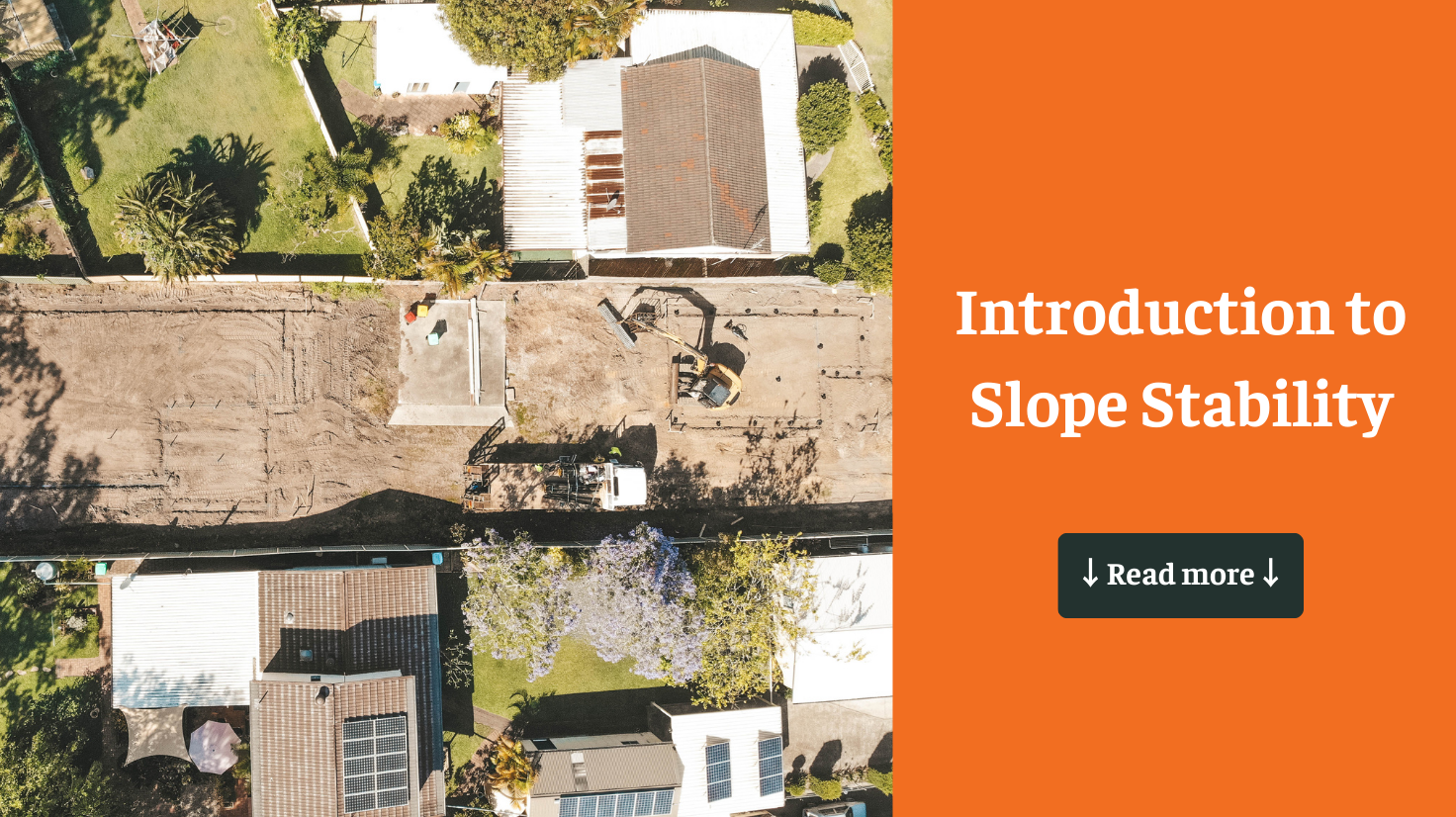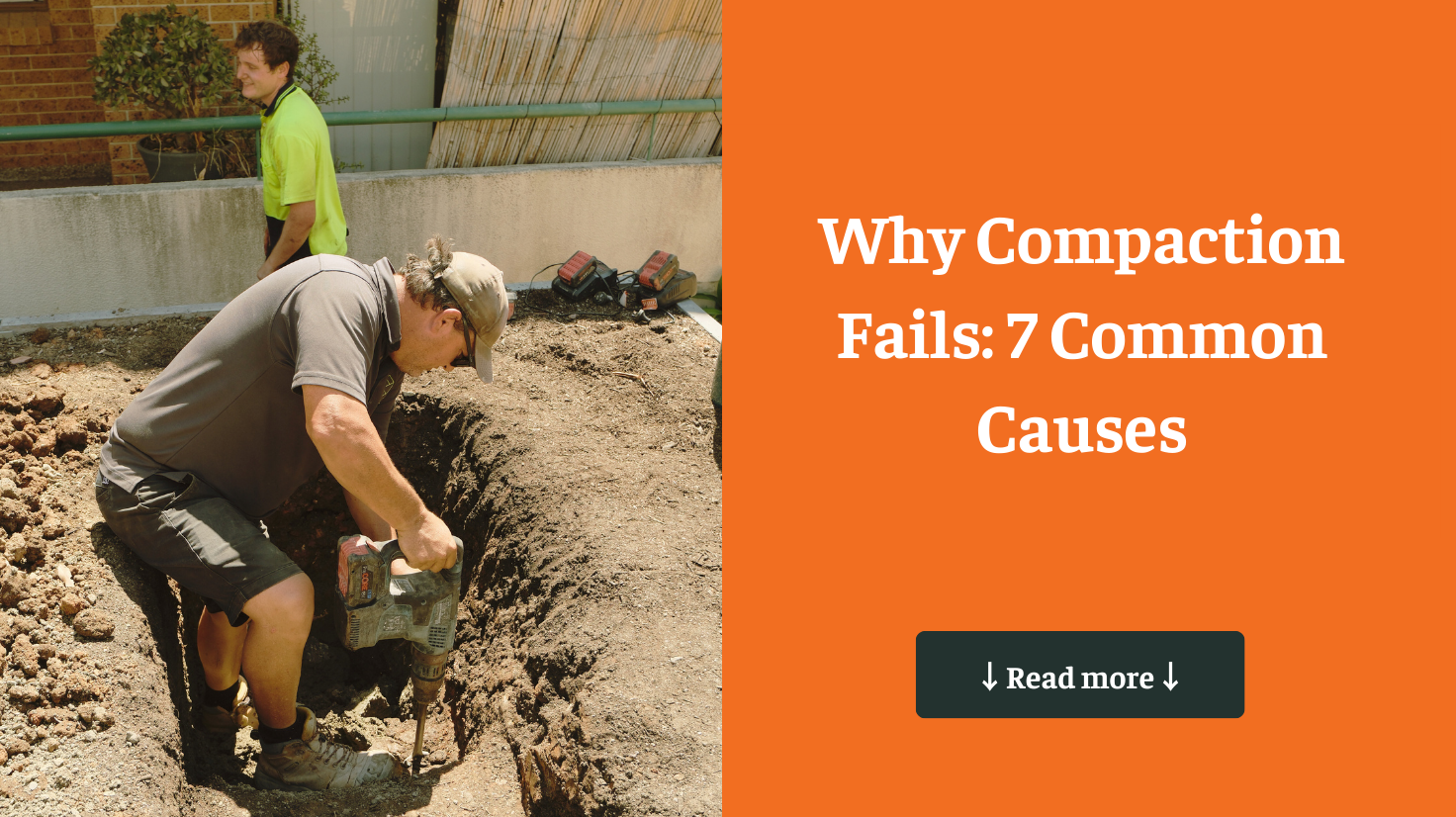Slope stability is a key element of geotechnical engineering, focusing on the safety and reliability of slopes in both natural and built environments. Understanding this concept is essential to prevent landslides, erosion, and structural failures, which can have serious consequences.
This article provides an overview of slope stability, its importance, and fundamental definitions to help you grasp this vital concept in construction and environmental management.
1. What is Slope Stability?
Slope stability refers to the capacity of a slope to remain intact and resist failure under various environmental and structural forces. A stable slope maintains its shape and structure under normal conditions, while an unstable slope is prone to collapse or sliding, posing serious risks to both human safety and infrastructure.
In geotechnical terms, slope stability is determined by the balance between driving forces (which promote slope movement) and resisting forces (which counteract this movement). When driving forces exceed resisting forces, slope failure occurs, leading to potential landslides or other forms of ground movement.
2. Factors Influencing Slope Stability
Several interrelated factors influence the stability of a slope. Understanding these factors is crucial for assessing risk and implementing appropriate mitigation measures:
- Soil Composition and Strength: The type and condition of soil play a vital role in determining slope stability. Soils with high shear strength, such as those composed of dense, cohesive materials, are generally more stable. Conversely, loose or saturated soils, particularly those with a high clay content, are prone to instability.
- Slope Angle and Height: The geometry of the slope is a key determinant of stability. Steeper and higher slopes are more susceptible to failure due to the increased gravitational forces acting on the slope material. The steeper the angle, the more likely the slope is to experience movement.
- Water Content: Water is one of the most significant factors affecting slope stability. Increased water content can reduce soil cohesion, increase pore water pressure, and add weight to the slope, all of which contribute to a higher risk of failure. Excess moisture can also lead to soil liquefaction, a condition where the soil loses its strength and behaves like a fluid.
- Vegetation: Vegetation plays a dual role in slope stability. The roots of plants and trees help to bind the soil together, reducing erosion and increasing stability. However, the removal of vegetation, whether through deforestation, construction, or natural causes, can lead to increased erosion and a significant decrease in slope stability.
- Human Activity: Construction activities, such as excavation, mining, and the addition of loads (e.g., buildings, roads), can significantly alter the natural balance of slopes, potentially leading to instability. Additionally, improper drainage systems can exacerbate slope failure risks by allowing water to accumulate in critical areas.
3. Importance of Slope Stability
Understanding and ensuring slope stability is essential for several reasons:
- Safety: Slope instability can lead to landslides, rockfalls, and other types of mass movement, posing significant risks to human life and property. Preventing these events is crucial for protecting communities and infrastructure located in or near slope-prone areas.
- Environmental Protection: Unstable slopes can lead to severe soil erosion, which degrades land and harms ecosystems. This erosion can result in the loss of fertile topsoil, increased sedimentation in rivers and streams, and damage to aquatic habitats.
- Economic Considerations: Slope failures can result in costly repairs, legal liabilities, and delays in construction projects. The economic impact of such events can be substantial, affecting not only the project at hand but also the broader community and environment.
- Infrastructure Longevity: Stable slopes are essential for the durability and longevity of infrastructure such as roads, bridges, buildings, and dams. Proper slope management ensures that these structures remain safe and functional over their intended lifespan.
4. Slope Stability Analysis
Slope stability analysis is a critical process in geotechnical engineering, used to evaluate the factors contributing to slope failure and determine the overall safety of a slope. The analysis typically involves several key steps:
- Site Investigation: The first step involves collecting soil and rock samples from the slope, conducting field tests, and gathering data on the slope’s geometry and hydrology. This information is used to assess the physical and mechanical properties of the slope materials.
- Modeling and Simulation: Engineers use specialized software to create models of the slope and simulate various conditions, such as changes in water content, seismic activity, and the effects of construction. These simulations help to predict how the slope will behave under different scenarios and identify potential failure points.
- Monitoring: Long-term monitoring is often implemented to track slope movements and detect early signs of instability. Instruments such as inclinometers, piezometers, and GPS systems are used to measure ground displacement, pore water pressure, and other critical parameters. This data is essential for making informed decisions about slope management and mitigation.
5. Mitigation Strategies for Slope Stability
Once the analysis has been conducted, various strategies can be employed to enhance slope stability and prevent failure. Common mitigation methods include:
- Regrading and Reshaping: Modifying the slope geometry by reducing its angle or height can significantly improve stability. This method redistributes the soil mass to achieve a more stable configuration.
- Drainage Control: Installing drainage systems to manage surface and subsurface water flow reduces pore water pressure and enhances soil stability. Proper drainage is crucial in areas with high rainfall or groundwater issues.
- Vegetative Cover: Planting vegetation on slopes helps to stabilize the soil by reinforcing it with root systems and reducing surface erosion. This method is particularly effective in natural and environmentally sensitive areas.
- Retaining Structures: Constructing retaining walls or other barriers provides lateral support to unstable slopes. These structures are commonly used in urban areas, roadway embankments, and steep slopes where space is limited.
- Soil Nailing and Anchoring: Installing steel bars (nails) or anchors into the slope can reinforce and stabilize the soil mass. This method is effective for steep slopes, excavations, and areas where retaining walls are not feasible.
6. Conclusion
Slope stability is fundamental to geotechnical engineering, ensuring safety, environmental protection, economic viability, and infrastructure longevity. By understanding the factors affecting slope stability and conducting thorough analyses, engineers can design effective measures to prevent slope failures, safeguarding lives, property, and promoting sustainable development.
Ideal Geotech specialises in providing comprehensive geotechnical assessments, including slope stability analysis. Visit our website or contact us today to learn more about our services and how we can support your next project.
Order Our Geotechnical Services Now







